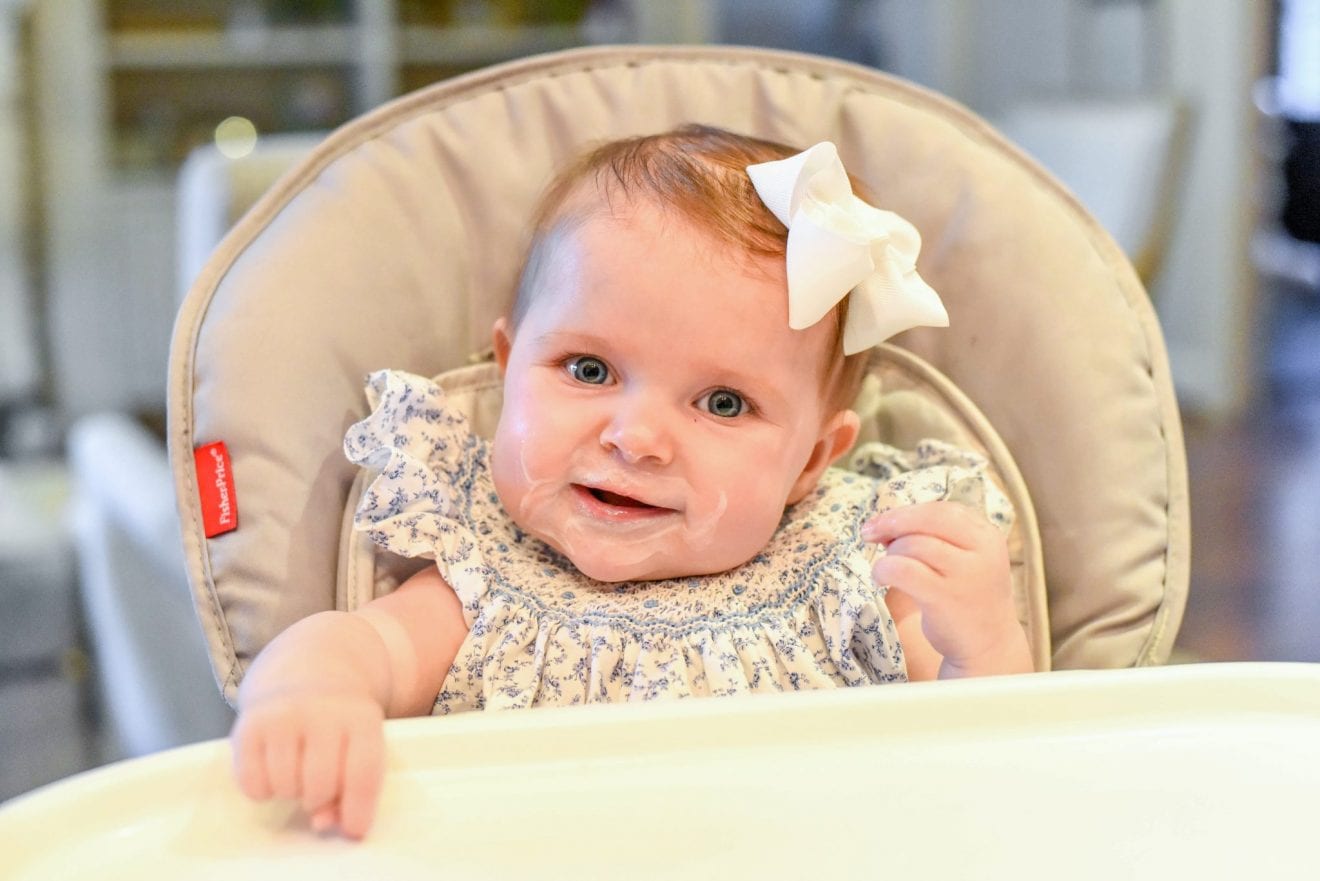When my son’s first birthday came, I was so excited for a couple of reasons: first, we made it a year, and second, we could be done with bottles! I felt hesitantly confident that he could survive on his table food diet alone. The financial freedom of not buying any more formula was a blessing, especially since our kids needed the most expensive brand out there! Some people can’t wait to get rid of bottles at one year old. Others keep bottles a little longer than one year. Either is okay!
I wanted to adhere to the guidelines of ending formula at a year, and when that year came, I was ready!1 However, with that came uncertainty about how and when to feed him. I was terrified of allergies and him not getting the nutrition he needed. Luckily, we figured it out just fine, and I am happy to report he thrived. I have written two different mock schedules. One is for the moms gearing up for the big one-year birthday, and the other is for the moms already there. I hope this helps!
To start, I want to encourage you that at this stage, from roughly 10-13 months, it’s a challenge even to get them to sit still long enough to eat. They are busy and would rather be exploring than spending time eating. That’s okay. They will eat when they are hungry.
By 11 months of age, it is encouraged to have the baby on almost all table food.
Bottle or Breast Hybrid Feeding Schedule for a One-Year-Old
- Wake-up: Breastfeed or bottle. Offer a cup with water and a straw, and then offer table food such as a banana, toast, avocado, sausage, or scrambled eggs.
- Morning Nap
- Wake-up: Breastfeed or bottle.
- Lunch: Table food is offered like green beans, diced chicken breast, pouch or yogurt, and a cup with water and a straw.
- Afternoon Nap
- Wake-Up: Breastfeed or bottle, and then offer an afternoon snack like fruit or dry cereal.
- Dinner Time: Offer whatever you are having for dinner to your 11 months + old baby.
- Bedtime: Offer the last bottle or breastfeed before bed.
At 12 months of age, it is safe to drop the bottle entirely and only offer drinks like water or milk in a cup with a straw. If your child doesn’t like to drink milk, that’s okay! Just be sure they’re getting adequate amounts of calcium and vitamin D during the day from other sources.
Exclusive Table Food Feeding Schedule for a One-Year-Old
- Wake Up: 30 minutes after waking is breakfast of table food. Scrambled eggs, dry cereal, oatmeal, and fruit cut up.
- Morning Nap
- Lunch: Chicken nuggets diced up, shredded turkey, yogurt, a pouch, vegetables, and fruit
- Afternoon Nap
- Afternoon Snack: Dry cereal, a rice cake, yogurt, or fruit
- Dinner: Offer what you are having for dinner.
Include a cup of milk or water with each meal and snack.
A Few Tips for Feeding a One-Year-Old:
- Offer milk throughout the day but do not exceed 16-20 oz. This helps alleviate an iron deficiency.
- Because milk tastes so different than the breastmilk or formula they are used to, it is okay to mix some formula or breast milk into regular milk to make the transition easier.
- Space meals out 2-3 hours apart.
- Offer a variety of foods, and let them do most of the feeding themselves! Your job is to offer a variety of healthy foods and allow your child to eat what he wants. It will probably not be consistent, and that’s okay. If he eats more at some meals or days than others, don’t worry, he’s learning to listen to his body, and that’s good.
- Keep working on using a straw. This helps tremendously with speech because it develops their mouth muscles.
- Do not offer food on demand throughout the day. Training them to know when mealtimes are will prevent you from living in your kitchen all day long!
- Be very mindful of choking hazards. Make sure the foods are easy to chew.
- Make it fun and embrace the mess (when you can)! Offer a variety of colors, shapes, and textures. Kids love dipping things, so try offering veggies with hummus or guacamole or fruit with yogurt for dipping.
- As long as your child doesn’t have any food allergies, give foods with allergic potential early and often (such as peanuts, eggs, fish, and other nut products). However, do not give whole or chinks of peanuts, as those are choking hazards.
Some quick food options for a one-year-old:
Breakfast:
- Waffles
- Scrambled eggs
- Avocado toast
- French toast (without syrup)
- Dry cereal
- Bananas
- Oatmeal
- Yogurt with berries
- Smoothie (You can put anything you want in it! Try blending in some frozen fruits, your favorite nut butter, chia seeds for fiber, even a handful of spinach.)
Lunch:
- Nut butter and jelly sandwiches
- Quesadilla
- Cheese sticks
- Carrot sticks
- Mixed berries
- Applesauce
- Grilled cheese
- Grilled chicken
- Turkey and cheese
Snacks:
- Sliced cucumbers
- Sliced bell peppers
- Pouches
- Yogurt
- Cottage cheese
- Grapes (be sure to cut in half lengthwise to avoid choking risk)
- Blueberries
- Apple slices
- Watermelon
- Celery with peanut butter
- Raisins
- Hard-boiled eggs
- Snap peas
- Pouches for on the go
I hope these feeding schedules and suggestions make this exciting new chapter easier for you and your family. You will see just how much simpler this stage really is in no time. Bon appétit!





























